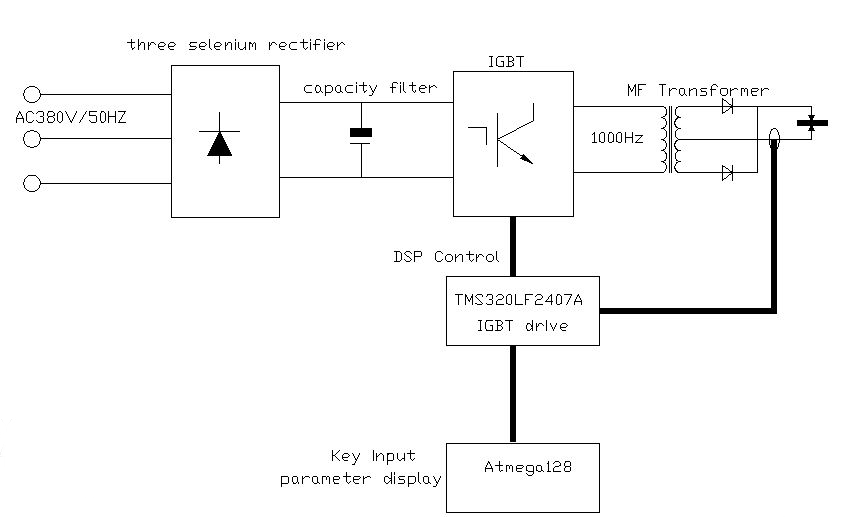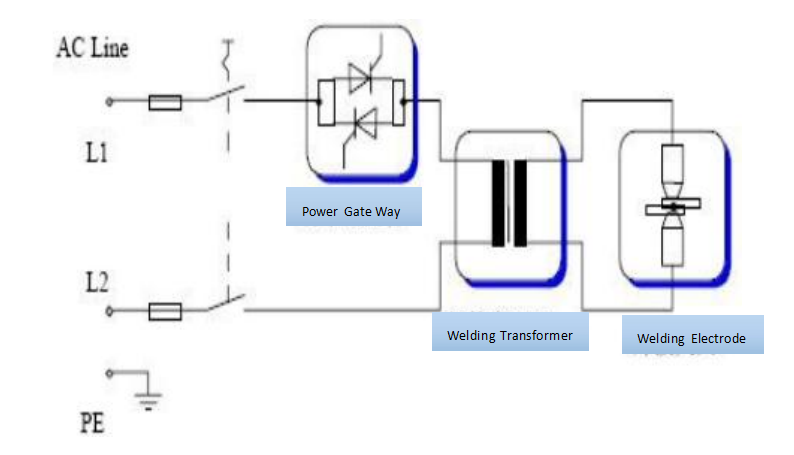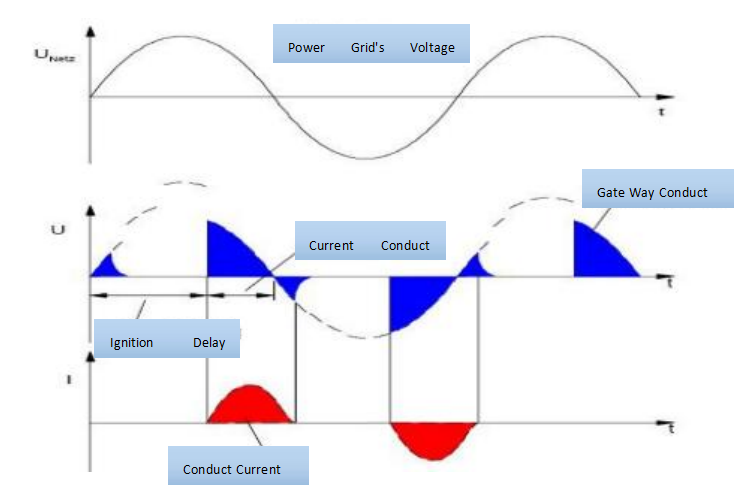DC Welding vs AC Welding: Who Comes Out on Top?
Direct current (DC) welding and alternating current (AC) welding are two commonly used welding processes, and they each have their own characteristics. In this article, we will analyze what are the differences between DC welding and AC welding in the field of resistance welding, and which welding is more advantageous? This will help you choose between the two.
Working Principles:
MFDC/Inverter Welding Machine:
Firstly, three-phase AC voltage passes through rectifiers for filtering.
Secondly, IGBT switches convert the current into a mid-frequency current of 1000 Hz and transmit it to the welding transformer.
Finally, high-power rectifier diodes output the welding current as stable direct current (DC).
AC Welding Machine:
The power input is AC, which, after passing through the power switch, enters the main circuit and control circuit.
The transformer steps down the high-voltage AC to a low-voltage AC suitable for welding. AC current alternates between positive and negative, generating heat as it passes through the welding rod and workpiece, thereby melting the welding material and achieving welding.
What are the differences between DC welding and AC welding?
Stability
DC welding is one of the internationally recognized high-end resistance welding products with strong welding stability. The welding process parameters are friendly, the secondary current ADAPTS to a wide range, and truly maintains constant current, which has a broader application prospect than AC welding.
The DC welding current is adjusted at a rate of 1000 times per second, reaching millisecond accuracy, which is more than 20 times higher than the accuracy of traditional AC welders.
DC welding is not affected by the shape and material of the workpiece, eliminating inductance loss. The AC welding machine is easy to welding deformation or poor firmness due to changes in the shape of the workpiece material.
Weld Splash
The DC power supply outputs the smallest waveform to avoid peak current shock and minimize splashing during welding. But AC welding in the welding process will produce a lot of spatter, affect the quality of welding products.
Welding efficiency
The welding power factor of DC welding machine is more than 98%, and the welding power factor of AC welding machine is about 60%, indicating that DC welding efficiency is significantly higher than AC.
Cost
Because the initial value of DC welding current is greatly increased, the actual welding time is shortened by more than 20%, and the time cost is greatly saved.
However, in the cost of the welding machine, the AC welding machine is more dominant, and its price may be only the general or even less than the DC machine. If you have a limited budget to buy a welding machine, then an AC machine is also a good choice.
Energy Conservation
The requirements for the factory power supply are low, only about 2/3 of the AC welder, even if the power supply voltage fluctuates, the DC welder can still accurately control the welding current. Therefore, the power consumption of DC welding machine is greatly reduced, and more than 40% energy saving is achieved.
Environmental Protection
DC welding is a green welding method that eliminates contamination of the power supply, does not require a separate power supply, and can be used with the robot welding fixture control system. Ac welding has a relatively large impact on the power grid, and it is easy to pollute the power supply.
Summary
In summary, DC welding is superior to AC welding in many aspects. If you have enough budget, then you must choose DC welding. In addition, if you need to weld products with high quality requirements, DC machine is also your best choice.



